Bridges have been some of the greatest civil engineering achievements in humanity’s history, and throughout time, spectacular work has been done to ensure these colossal structures are safe and can withstand the traffic, as well as the elements. But not every bridge is a modern marvel.
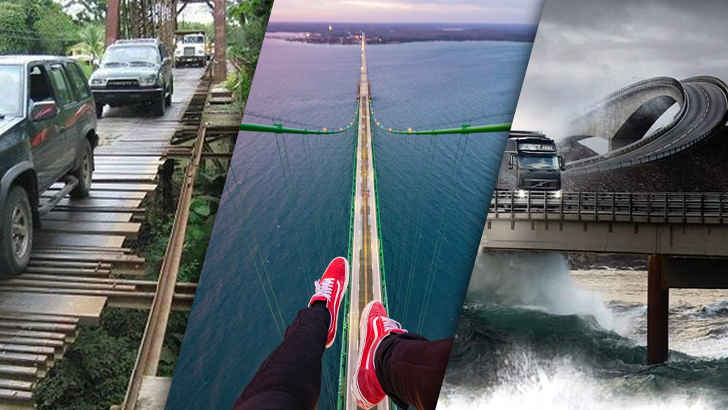
All around the world, incredible, seemingly impossible bridges have been built in the most precarious of areas, and if you’re scared of heights, you’ll be glad you don’t have to travel over these. From enormous, modern suspension bridges, to the oldest, wooden and rope bridges, these are the most dangerous bridges you can cross in the world by car, and even foot.
Lake Ponchartrain Causeway Bridge – USA

The 24-mile behemoth connecting Mandeville, Louisiana to New Orleans is an experience to drive over, to say the least. Not only is the length taxing, but fearful drivers require police escorts at times, and if fog rolls in, drivers must only drive in the right lane and refrain from passing. And when the weather gets especially bad, that’s when the auto incidents begin to stack up. It’s only 16 feet above water, making it the longest above-water highway bridge.
Austrian Road Bridges – Kazakhstan

Built during World War I by Austrian prisoners of war, the Austrian Road was constructed in 1915 in the eastern Kazakhstan portion of the Altai Mountains. The road consists of 16 bridges total, all made of wood and crossing over the Kara-Koba River. They’ve been rotting over the years, and become more perilous by the passing day, as some have already collapsed.
Hangzhou Bay Bridge – China

Stretching across the Hangzhou Bay, this bridge of the same name is actually the longest bridge crossing an ocean anywhere in the world. It snakes in an “S” shape across the water, connecting the northern cities of Zhenjiadai, Haiyan, and Jiaxing City to the southern Zhenjiang Province cities of Shuiluwan, Cixi, and Ningbo City. It’s 23 miles in length, and also features a 476-foot tower that you can do some sightseeing from.
Wabash Cannonball Bridge – USA

The Wabash Cannonball bridge is a single lane, wooden surface bridge that lies at the border of Illinois and Indiana. It was constructed just before the 20th century by the popular King Bridge Company. There are rumors that the bridge is cursed, but the more immediate concern for drivers should be the weight their car is carrying, and how the conditions over the Wabash River are.
Khurgan and Khoton Lakes Bridge – Mongolia

Nestled at the northern part of the Altai Mountains near the border of Mongolia and China is the Khurgan and Khoton Lakes Bridge. The short wooden bridge is only 100 meters, but is only passable 1 car at a time. With the integrity of the structure being questionable at best in some areas, drivers have to stay focused and make the trip quickly to ensure they keep momentum.
Danyor Suspension Bridge – Pakistan

In the northern region of Pakistan in a place called Gilgit-Baltistan, the Danyore Suspension Bridge is just over 500 feet long and goes straight into a 10 meter tall tunnel. Nicknamed “the bridge between heaven and hell” by the locals, it connects Gilgit to Danyure by crossing over the Hunza River. Drivers have said it’s the ultimate test of skill, and stopping often leads to being stuck.
Kawazu-Nanadaru Loop Bridge – Japan

One of the quirkiest bridges in the world is the Loop Bridge connecting Kawazu and Nanadaru. Most uniquely, it bridges two uneven mountainsides, so it requires a 148-foot spiral shape to transport cars up and down. Since the bridge lies between the mountains, it’s almost hidden until you come up on it when heading south from Tokyo. It’s a true engineering feat.
Ponte Sobre El Riu Segre – Spain

The northeastern Catalonia region of Spain is home to this highly suspicious bridge over the Segre River, located in the Lleida Province. The completely concrete roadway extends at basically just a foot above water levels, and over the course of its existence, numerous floods and other weather events have made it impassable. No guardrails and its narrow nature don’t help.
Kuskulana Bridge – USA

Located in Alaska along the McCarthy Highway, the Kuskulana Bridge is easily the most terrifying crossway in the rural Valdez-Cordova Census Area. The 525 foot bridge was built in 1910 and restored again in 1988, and rises 238 feet above the gorge below, making the trek over a nerve-racking one. Drivers passing over can only go 15 miles per hour.
Quepos Bridge – Costa Rica

A bridge no sane person would probably ever want to cross is this old, rickety wooden one connecting Jaco to Quepos. The road it’s located on runs along Costa Rica’s central Pacific coast, and uniquely, the road, and thus the bridge, only runs in one direction. The structure is so unstable that it creaks with each passing vehicle. And though it doesn’t seem to be able to hold a motorcycle, large trucks somehow pass over it every day.
Skippers bridge – New Zealand

Skippers Bridge in southwest New Zealand is the highest suspension bridge in the country, rising up to 90 meters above the river below. It was originally constructed in the same place in 1866, but was washed out numerous times by floods in the first 5 years, so it was rebuilt in its current form in 1871. It’s made of timber, stretches only 2 meters wide, and only allows one car to pass at a time.
Eshima Ohashi Bridge – Japan

Perhaps one of the most perplexing bridges when observed from the ground, the Eshima Ohashi Bridge towers up above. It connects the cities of Matsue and Sakaiminato, and scales incredibly high to allow ships to pass below. It’s a single lane bridge going either direction, and has a steep slope that’s been known to give drivers nausea and of course vertigo due to its size.
Ghudar bridge – Afghanistan

The Ghudar bridge in Afghanistan just looks risky from the outset. For a hanging bridge in today’s climate, it’s almost unsurprising to see it suffer increasingly from floods, which only has added to the flood season’s death toll as time has passed. The bridge only extends 50 meters long and was completely built by hand by local people, making it absolutely an at-your-own-risk.
Deception Pass – USA

Located in the Washington state park of the same name, Deception Pass is a bridge connecting Whidbey Island to Fidalgo in the northwest region of the state. It’s a massive steel bridge that looks over a portion of the Puget Sound, and has been a popular cultural landmark for both good and bad reasons. In addition to being scenic and featured in lots of movies and TV, it’s also been a site for more grim reasons as well.
Jinshajiang Bridge – China

Far away in northwest China’s Yunnan Province is the Jinshajiang Bridge, which is the world’s largest suspension bridge, only built and finished in 2020! What actually makes this bridge so dangerous, though, is its prone-ness to earthquakes, as the region is very volatile and it’s exacerbated by the altitude. It’s the highest bridge in Asia, crossing the continent’s highest river, and it’s also one of the longest distance bridges in the world, reaching 1,386 meters, or 4,547 feet.
Royal Gorge Bridge – USA

The highest bridge in the United States is the Royal Gorge Bridge, and it rises up to a height 955 feet tall, while looking down at the Arkansas river below. It spans the gigantic Royal Gorge, and is often a treacherous place to drive in the frigid and stormy winters. While the location has more or less become a tourist tap with zip lines and roller coasters, it’s still very dangerous in hazardous weather conditions.
Storseisundet Bridge – Norway

This Norweigan bridge has grown quite famous for the pictures captured of the waves crashing against it, and drivers should be wary for good reason. Water often reaches up on the pathway, and increasing elevation on the bridge only brings more wind. Though images often paint it out to have a sloping shape, the bridge is actually just like any other, and simply curves to its peak.
Vitim River Bridge – Siberia

One of the sketchiest bridges you can cross in any kind of vehicle is the Vitim River bridge, which was formerly a railway, but is not just covered by a bunch of wood planks. As if the crossing path wasn’t risky enough by only fitting about one car width, but it also is absent of any kind of guard rail, meaning one wrong move and you’re in big trouble. Oh, and when there’s ice, good luck.
Seven Mile Bridge – USA

Stretching out off the southern tip of Florida, the Seven Mile Bridge is a popular crossway that helps travelers get to the Florida Keys. Extending the length of its name, it’s actually an advanced rebuild from the original, which was wiped out by a hurricane, and that one still exists too, it’s just open to pedestrians and cyclists. While driving over, nothing’s visible but ocean, making it especially scary in the stormy season.
Sidu River Bridge – China

You could basically validate that Chinese highway systems have quite literally reached their peak, as the Sidu River Bridge in Yesanguan links the mountains surrounding the Sidu River Valley. This site makes it the tallest bridge in the world, reaching an astounding 1,600 feet above ground, and spanning 5,000 feet across. Don’t look down, as the height is mighty terrifying.
Captain William Moore Bridge – USA

Making its home in Skagway Alaska, the Captain William Moore bridge can be found straddling the gorge near White Pass, and is named after a famed tradesman, boat captain and pilot who was known for discovering and documenting much of the region. Due to its older nature and vulnerability to earth tremors, the bridge has reached the end of its lifetime, making crossing it today a risky idea.
Mackinac Bridge – Michigan

The Mackinac Bridge isn’t the most terrifying for the typical reasons you may think of, but it’s length of 5 miles, the constant fog and hazardous winds are enough to make you nervous when crossing. Connecting the northern and southern peninsulas over the Straits of Mackinac, the suspension bridge boasts an absurd sway radius, sometimes moving as much as 35 feet on the windiest days.
Millau Viaduct – France

Previously the tallest bridge in the world before the Sidu River bridge overtook all, the Millau Viaduct has pylons standing at over 1,100 ft., while the length is another 8,000 feet, making it a highly capable bridge. Your drive will take you right through the clouds and the equivalent to 110 stories high, while allowing you to travel from Paris to Bexiers and Montpellier. In the winter it becomes even more dangerous due to high winds and heavy snow storms.
Longjiang Bridge – China

The Longjiang bridge is a pretty new suspension bridge that was just completed in 2016, and connects the cities of Baoshan and Tengchong, most notably resembling the Golden Gate Bridge in San Francisco. This nearly 10,000 foot tall bridge is over 4,000 feet long, and was the longest in the country until the Jinshajiang and Sidu Valley bridges passed it. As another mountainous bridge, it’s what’s below and the shaking earth that pose the greatest threats.
Akashi Kaikyō Bridge – Japan

Connecting the cities of Kobe to Iwaya on the Awaju Island, Japan’s Akashi Kaikyo Bridge is a sight to behold. It’s the world’s longest central spanning suspension bridge at 6,532 feet, and replaced ferries, which previously carried patrons to the island. Due to the treacherous conditions in the area, winds and heavy rains during typhoon season make it difficult to cross.
Linn Cove Viaduct – USA

Located along the Blue Ridge Parkway and snaking across the side of Grandfather Mountain, the Linn Cove Viaduct reaches over 1,200 feet and is made completely out of concrete. The bridge straddles the mountainside and it’s susceptible to rough weather and even some landslides, which probably wouldn’t make it to the road, but seems ominous when you’re adrift on the side of a cliff.
Sunshine Skyway – USA

Located over Tampa Bay, Florida, the Sunshine Skyway rises up to 430 feet above the water below, and is the longest cable stayed concrete bridge in the world. Though it has a pleasant name, some of its history is not. In 1980, a freight ship collided with a column, causing the bridge to collapse and lead to 35 deaths due to driving off. To this day, it becomes very dangerous with high winds and storms, and is often closed in these conditions.
Lions Gate Bridge – Canada

The largest suspension bridge in western Canada, Lion’s Gate in British Columbia is a pop culture star, appearing in many tv shows and movies. It was first open in 1938, and has had to deal with frozen winters and tons of foggy days since. Accidents are actually common dude to the undivided lanes, and the sheer size has drawn suicide attempts as well, making it a hazard as much as it is necessary infrastructure.
Annai Indira Gandhi Road Bridge – India

Located in southern India in Tamil Nadu, this colossal bridge connects the main highway with Pamban Island and the town of Rameswaram. After Florida, southern India is one of the most corrosive areas for bridges because they erode the structures supports, meaning maintenance is tougher due to constant winds and rain. However, the giant steel bridge still allows ships to pass through, making it a necessary transportation point.
Nadym River pontoon bridge – Russia

Open strictly in the summer considering the Arctic Circle is frozen for half the year, the Nadym River pontoon bridge is one of a kind. Not only is it literally a moving, floating plastic crossway, but it’s even submerged in a foot of water at some parts. It takes a lot of guts to risk your car and even life to cross into this remote town, which plans to build an additional hovercraft surface to get over the river in the winters.
Cuyuni River bridge – Venezuela

The Cuyuni River bridge is located in Eastern Venezuela, and has a sort of interesting history for being in such a remote part of the country. Rumor has it that it was built by Gustave Eifel, who obviously contracted the Eiffel Tower, and you can see it somewhat in the design. Standing at 170 meters long, it crosses along Ruta 10, and is often prone to smugglers and bandits as times have grown more tumultuous.
Trift Bridge – Switzerland

This intense foot bridge in the Swiss Alps is perhaps the most simultaneously scenic and terrifying bridge you could ever cross. Before reaching it, you’ll have to board a cable car, then hike an additional hour and a half. The bridge is 170 feet long, and 330 feet above the Triftsee Lake, which lies below. The bridge was replaced by a sturdier version in 2009 after tourists were having trouble crossing the original built in 2004.
Raakhi Gaaj Project – Pakistan

Coming in as the second largest steel bridge in all of Asia, the Raakhi Gaaj stands tall and proud in its home of Punjab Province. The structure now connects two major highways in the region, and was just finished in 2019, comprising eight separate bridges that connect to facilitate high traffic volumes, which is actually why it’s so dangerous.
Kinzua Bridge – USA

Found in McKean County, Pennsylvania, the Kinzua bridge is unlike anything else on this list. The bridge, which was built in 1882 was wiped out by a tornado in 2003, and was rebuilt in 2011 with a fully glass skywalk. This way, visitors can cross the bridge once again, observing the fallen bridge pieces below exactly where they fell almost 20 years ago – a beautiful renovation.
Hong Kong–Zhuhai–Macau Bridge – China

The world’s longest sea bridge is thanks to who else but the Chinese. Just opening in 2018, the Hong Kong-Zhuhai-Macau Bridge connects both Macau and Hong Kong to mainland China, stretching to an astounding 34 miles in total. That’s as long as 60 Golden Gates. It features 6 lanes, making as much of a traffic risk as it is a weather one, and took a total of 400,000 tons of steel to build.
Langkawi Sky Bridge – Malaysia

Off the coast of Malaysia on the island of Langkawi is the sky bridge which stretches across the gigantic, mountainous forest. This incredibly high bridge is a staggering 2,000 feet above sea level, and you must take a cable car to be able to access it. It’s 410 feet in total, and has undergone multiple renovations since its original construction in 2005. Definitely not for those afraid of heights.
Hell’s Backbone Bridge – USA

Towering above the Sandy Creek Gorge in southern Utah, Hell’s Backbone Bridge is only 110 feet long and 15 feet wide, but sits more than 1,500 feet above the ground below. It’s become a huge tourist spot for its scenic canyon views, as it was rebuilt from its old, unstable self in 2005. Since it’s concrete and has low guard rails, winters can be extremely dangerous during storms.
Aiguille du Midi Bridge – France

Another Alps bridge is the front-runner for the highest in the world, as the Aiguille du Midi Bridge in the French Alps stands at a ridiculous 12,500 feet above sea level. Near the summit of the mountain and overlooking the Mont Blanc massif, the bridge recently upgraded to a glass floor, making the view below even more impressive. There’s definitely no other bridge like it.
River Cannich Bridge – Scotland

With just a single lane, the beautiful River Cannich Bridge is as scenic as it is menacing when the conditions are bleak. It only holds about 17 tons, and reaches a humble 50 meters across. When traveling from Liatrie to Cannich, drivers have been known to find the bridge uncrossable, only to have to turn back. The Highland Council area where Strathglass is also is prone to rough winter storms.
Hussaini Hanging Bridge – Pakistan

In northern Pakistan’s Hunza region is perhaps the most precarious foot bridge of them all. The Hussaini Hanging Bridge’s swinging wooden planks are sure to provide a challenge to anyone who dares to cross, and the thin nature of the ropes don’t make it much easier. As an obvious physical challenge and unique feat to the region, it’s had many people flocking to check it out.
Canopy Walk – Ghana
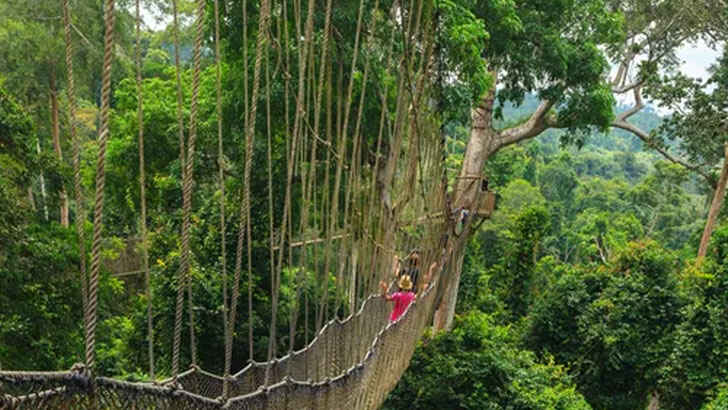
At a towering height of more than 100 feet, it’s hardly a shock that the locals in Ghana refer to this kind of bridge as a canopy walk. Upon traversing this suspended bridge that stretches almost 1,000 feet in length, visitors to the Kakum Canopy Walkway will undoubtedly feel a sense of achievement, as this is one of just three such walkways found throughout the African continent.
Titlis Cliff Walk – Switzerland
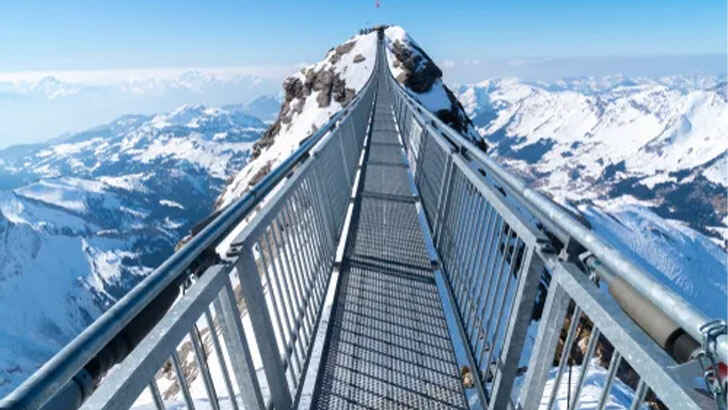
Nestled among the countless peaks of the Swiss Alps lies the Titlis Cliff Walk, an awe-inspiring structure perched at an altitude of 10,000 feet above sea level. Despite its relatively short length of 320 feet, this bridge has gained worldwide notoriety as the “world’s scariest bridge” owing to its precarious three-foot width and insane geographical location, hugging just one of the many mountains in the range.
Puente de Ojuela – México
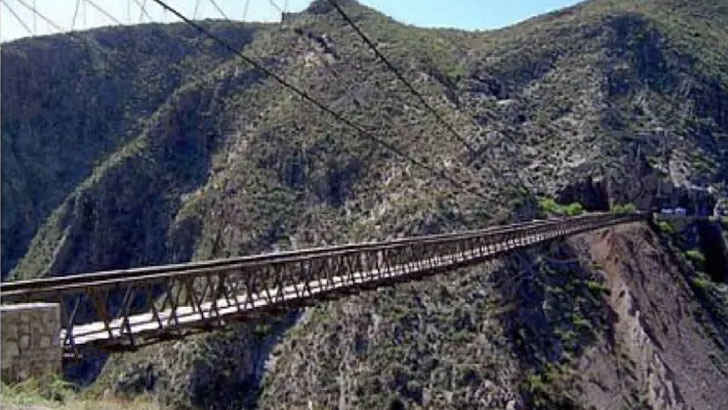
Situated in the Mexican state of Durango, the suspension-style bridge commonly known as the “Ojuela” or “Mapimi” bridge, now serves as a pedestrian walkway, but in the past, it functioned as a major thoroughfare to the Ojuela Goldmine site.
Iya Kazurabashi Bridge – Japan
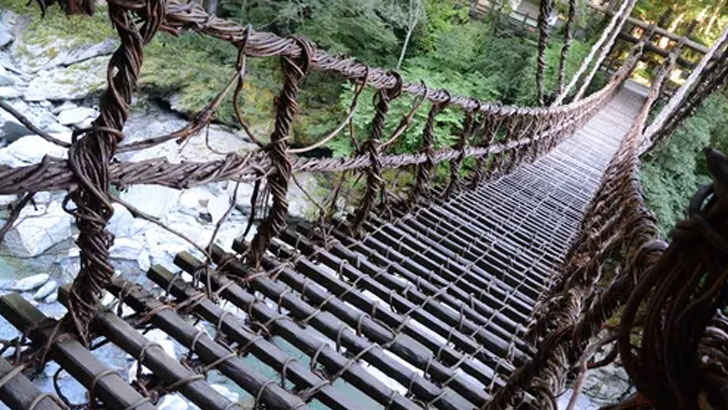
The Japanese term “Kazurabashi” can be translated to “mountain vine” in English, which is fitting since the Iya Kazurabashi bridges in Japan are made entirely of vines and are the only three such bridges remaining that cross the Iya Valley. Every three years, these unique bridges are reconstructed with the addition of a steel cable integrated into the vines for added safety. It’s worth noting that these bridges are unidirectional, meaning they can only be crossed in one direction.
The Bridge of Immortals – China
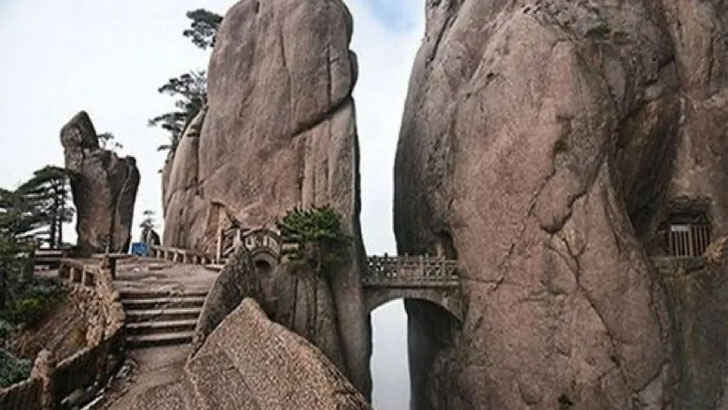
Located in Huangshan, China, the Bridge of Immortals, also referred to as the “Fairyland Bridge,” is a stone-carved bridge that connects the passageway between two tunnels that were chiseled out of the rock of two nearby mountaintops. Despite its ancient appearance, this bridge was actually constructed in 1987.
Montenegro Rainforest Bridge – Costa Rica
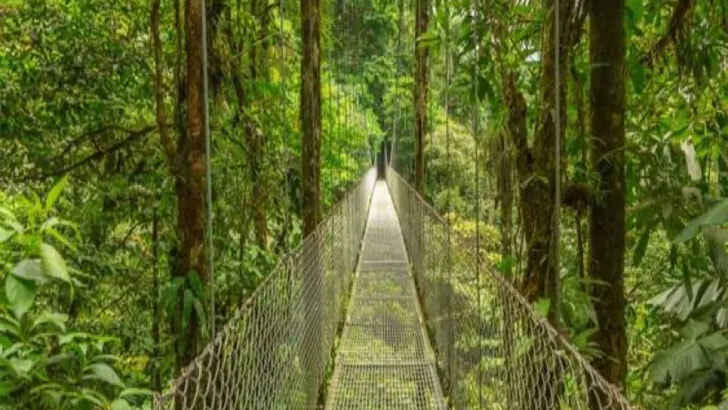
A series of six footbridges, spanning a distance of 984 feet, form an interconnected path for climbers above the Monteverde Rainforest in Costa Rica. The lush environment, filled with a dense canopy and abundant moisture, provides ample opportunities to spot jaguars and snakes, though visitors must be wary of the insects that inhabit the region.
U Bein Bridge – Myanmar
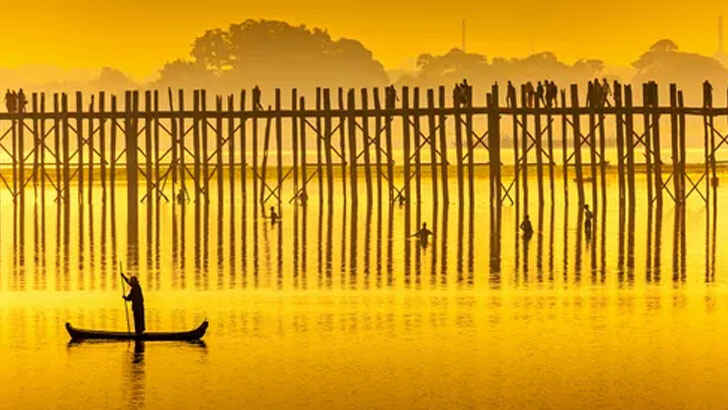
Built in the 1850s, the U Bein Bridge stretches nearly three-quarters of a mile across Myanmar’s Taungthaman Lake. The bridge’s teak walking planks are in a state of decay, and there are no guardrails, which is causing it to deteriorate, particularly due to the large number of pedestrians crossing it. To ensure visitors’ safety, particularly with the recent rise in crime, a police force has been established to guard the bridge.
Cloud Bridge at Daedunsan Mountain – South Korea
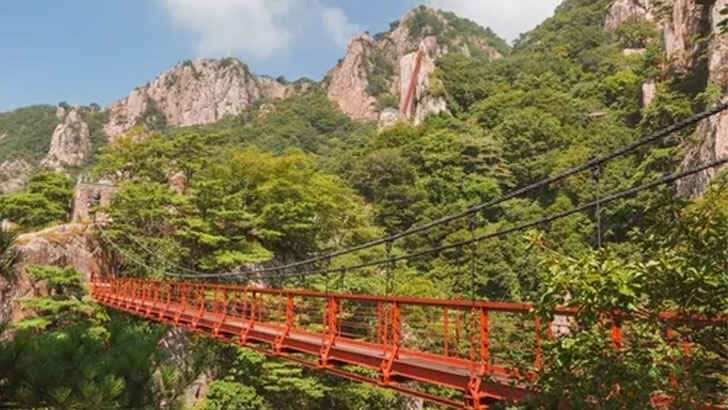
The Cloud Bridge at Daedunsan Mountain in South Korea is situated in the South Jeolla province, within the Wolchulsan National Park, which happens to be the smallest national park in the country. Despite the bridge’s popularity, it’s the stairs leading up to it that tend to grab most visitors’ attention.
Zhangjiajie Glass Bridge – China
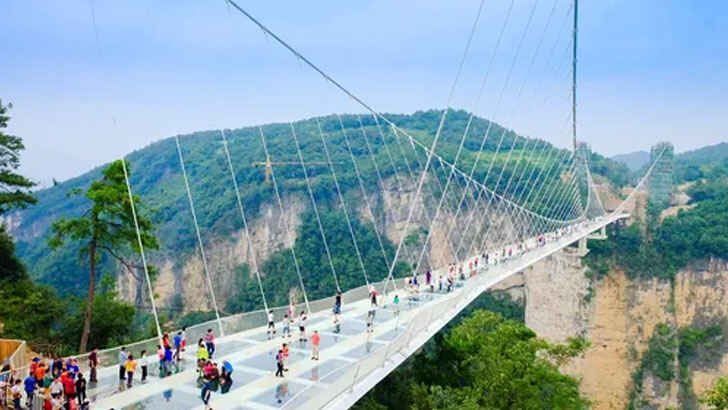
The Zhangjiajie Glass Bridge is a pedestrian skywalk bridge built with transparent glass panels, situated above the Wulingyuan area of Zhangjiajie in Hunan, China. After opening to tourists in 2016, it was closed by authorities mere weeks later. Though the bridge was designed to accommodate 800 people at a time, it was inundated with 80,000 visitors on a daily basis instead of the expected 8,000, forcing the authorities to shut it down temporarily. In the intervening period, both sides of the bridge were upgraded to handle the increased visitor traffic.
Trift Bridge, Switzerland
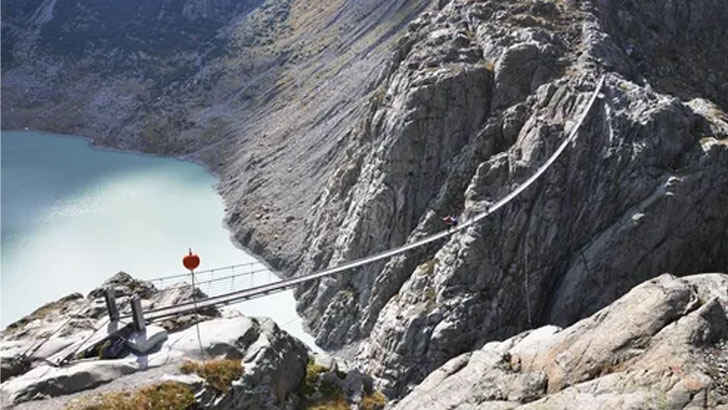
The Trift Bridge, located near the town of Gadmen in Switzerland, hangs 328 feet above glaciers. Constructed in 2004, the original bridge used to sway violently from side to side due to the lack of stabilizing cables. Although this issue was fixed in 2009, it’s easy to imagine how scary the original bridge might have been to cross.
Tianmen Skywalk – China
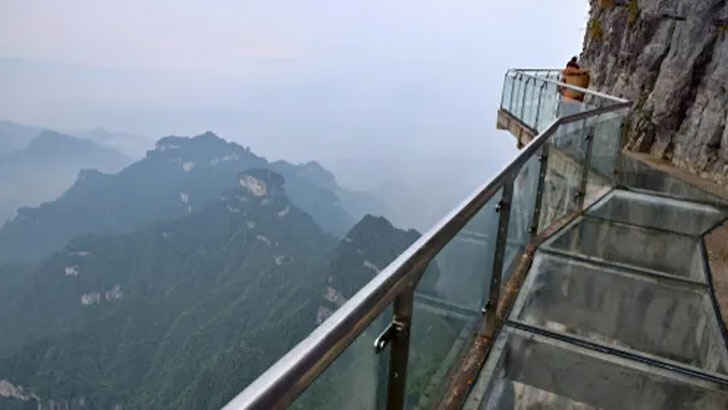
The Tianmen Skywalk is a clear bridge that wraps around the Tianmen “Heavenly Gate” Mountain for only 200 feet. Located 4,700 feet above the ground, the bridge is just three feet wide and 2 1/2 inches thick, making it an incredibly challenging feat to cross.
Keshwa Chaca Bridge – Peru
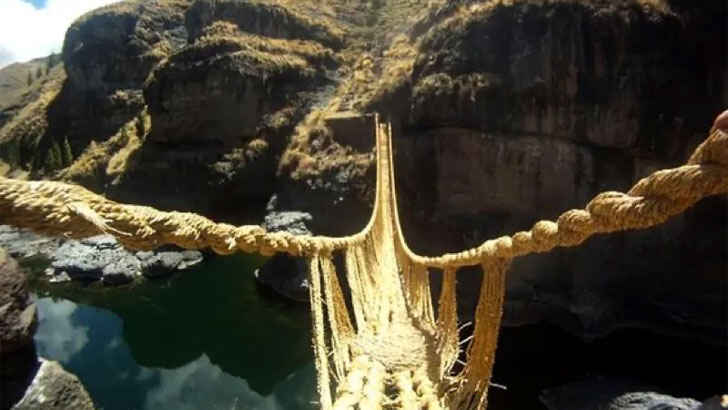
The Keshwa Chaca Bridge in Peru is a remarkable example of ancient engineering, built during the rule of the Incans. What makes it even more extraordinary is that it was constructed using grass over 500 years ago. Women braided thin ropes while men transformed them into “support cables,” showcasing the ingenuity and skill of the Incan people. Today, the bridge stands as one of the last remaining examples of their remarkable engineering prowess.
Moses Bridge – Netherlands
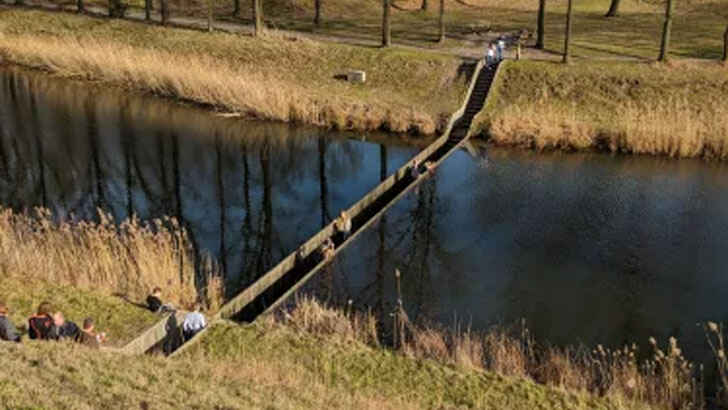
The Moses Bridge is located in Fort De Roovere, a Dutch earthen fort, and was built as a water-based defense during the Eighty Years War in 1628. What makes it particularly unique is that the bridge is sunken into the moat, which piques the interest of visitors from all around.
Plank Bridge – Indonesia
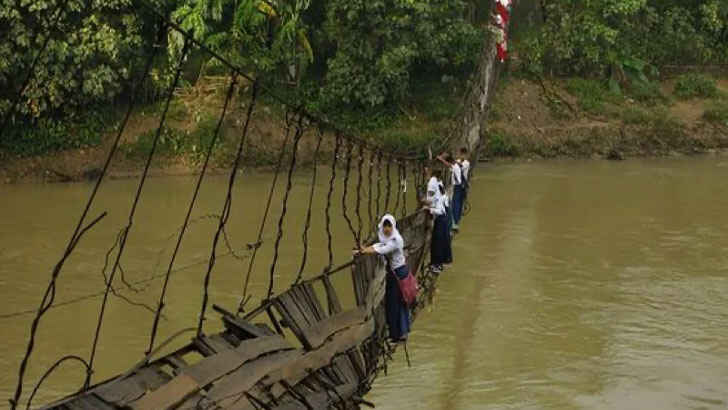
Visitors to Indonesia can experience the precariousness of a disastrous plank bridge firsthand. The bridge is in a state of disrepair, evident by its single horizontal and vertical support. Local residents who depend on it for crossing the river must exercise extreme caution to avoid falling into the questionable waters below.
Monkey Bridges – Vietnam
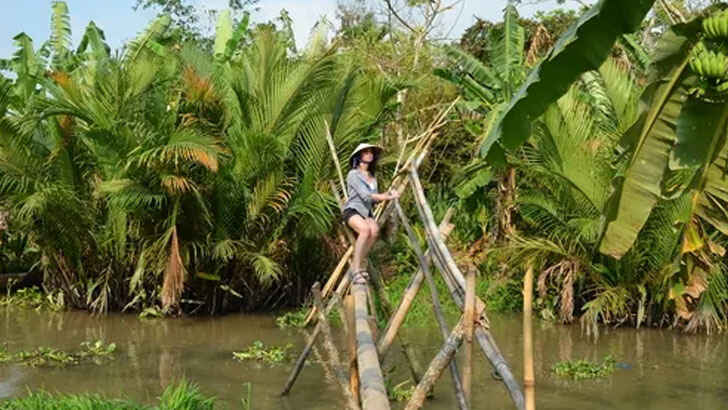
In Vietnam, locals refer to them as “Monkey Bridges,” these are passageways made of wood or bamboo that typically span over gullies or streams. Some may be built with bamboo or coconut, while others may not have handrails, making them tricky to navigate. Even for the locals, falling into the water is not unheard of.

























































































